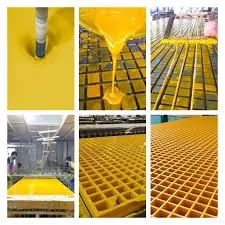
-
 Afrikaans
Afrikaans -
 Albanian
Albanian -
 Amharic
Amharic -
 Arabic
Arabic -
 Armenian
Armenian -
 Azerbaijani
Azerbaijani -
 Basque
Basque -
 Belarusian
Belarusian -
 Bengali
Bengali -
 Bosnian
Bosnian -
 Bulgarian
Bulgarian -
 Catalan
Catalan -
 Cebuano
Cebuano -
 China
China -
 China (Taiwan)
China (Taiwan) -
 Corsican
Corsican -
 Croatian
Croatian -
 Czech
Czech -
 Danish
Danish -
 Dutch
Dutch -
 English
English -
 Esperanto
Esperanto -
 Estonian
Estonian -
 Finnish
Finnish -
 French
French -
 Frisian
Frisian -
 Galician
Galician -
 Georgian
Georgian -
 German
German -
 Greek
Greek -
 Gujarati
Gujarati -
 Haitian Creole
Haitian Creole -
 hausa
hausa -
 hawaiian
hawaiian -
 Hebrew
Hebrew -
 Hindi
Hindi -
 Miao
Miao -
 Hungarian
Hungarian -
 Icelandic
Icelandic -
 igbo
igbo -
 Indonesian
Indonesian -
 irish
irish -
 Italian
Italian -
 Japanese
Japanese -
 Javanese
Javanese -
 Kannada
Kannada -
 kazakh
kazakh -
 Khmer
Khmer -
 Rwandese
Rwandese -
 Korean
Korean -
 Kurdish
Kurdish -
 Kyrgyz
Kyrgyz -
 Lao
Lao -
 Latin
Latin -
 Latvian
Latvian -
 Lithuanian
Lithuanian -
 Luxembourgish
Luxembourgish -
 Macedonian
Macedonian -
 Malgashi
Malgashi -
 Malay
Malay -
 Malayalam
Malayalam -
 Maltese
Maltese -
 Maori
Maori -
 Marathi
Marathi -
 Mongolian
Mongolian -
 Myanmar
Myanmar -
 Nepali
Nepali -
 Norwegian
Norwegian -
 Norwegian
Norwegian -
 Occitan
Occitan -
 Pashto
Pashto -
 Persian
Persian -
 Polish
Polish -
 Portuguese
Portuguese -
 Punjabi
Punjabi -
 Romanian
Romanian -
 Russian
Russian -
 Samoan
Samoan -
 Scottish Gaelic
Scottish Gaelic -
 Serbian
Serbian -
 Sesotho
Sesotho -
 Shona
Shona -
 Sindhi
Sindhi -
 Sinhala
Sinhala -
 Slovak
Slovak -
 Slovenian
Slovenian -
 Somali
Somali -
 Spanish
Spanish -
 Sundanese
Sundanese -
 Swahili
Swahili -
 Swedish
Swedish -
 Tagalog
Tagalog -
 Tajik
Tajik -
 Tamil
Tamil -
 Tatar
Tatar -
 Telugu
Telugu -
 Thai
Thai -
 Turkish
Turkish -
 Turkmen
Turkmen -
 Ukrainian
Ukrainian -
 Urdu
Urdu -
 Uighur
Uighur -
 Uzbek
Uzbek -
 Vietnamese
Vietnamese -
 Welsh
Welsh -
 Bantu
Bantu -
 Yiddish
Yiddish -
 Yoruba
Yoruba -
 Zulu
Zulu
Fabricating Fiberglass Weirs for Efficient Water Management Solutions in Environmental Engineering
The Benefits and Uses of Fiberglass Weirs
Fiberglass weirs are increasingly becoming a popular choice in the field of water management and environmental engineering. These structures, typically used for measuring flow rates and controlling water levels in open channels, offer numerous advantages over traditional materials such as concrete and steel. As we delve into the features and benefits of fiberglass weirs, it’s essential to understand why they are an innovative solution for modern water-related applications.
Durability and Longevity
One of the primary benefits of fiberglass weirs is their durability. Fiberglass is highly resistant to corrosion, which is particularly advantageous in environments exposed to water, chemicals, and varying weather conditions. Unlike steel, fiberglass does not rust, and unlike concrete, it does not crack under stress. This exceptional durability ensures that fiberglass weirs have a significantly longer lifespan with minimal maintenance requirements. Consequently, this longevity reduces the total cost of ownership for water management projects.
Lightweight and Easy Installation
Fiberglass weirs are remarkably lightweight compared to traditional materials. This characteristic simplifies transportation and handling, leading to quicker installation processes. Construction teams can easily maneuver the material, thereby reducing labor costs and the time required to set up a weir. Notably, the ease of installation makes fiberglass weirs an attractive option for remote locations or areas where heavy equipment may not be accessible.
Cost-Effectiveness
While the initial cost of fiberglass may be higher than some traditional materials, the overall cost-effectiveness becomes apparent over time. The negligible maintenance costs, coupled with their longevity, make fiberglass weirs a financially savvy investment. Organizations can save money by reducing the frequency of repairs and replacements, ensuring that budgets can be allocated more efficiently to other areas.
fiberglass weir

Flexibility in Design
Fiberglass weirs allow for greater flexibility in design and customization than traditional options. They can be manufactured in various shapes and sizes, tailored to meet specific site requirements. This versatility enables engineers to create solutions that fit the unique characteristics of the water bodies they manage. Furthermore, fiberglass can be molded into intricate designs, making it suitable for applications that require aesthetic considerations alongside functionality.
Environmental Considerations
In an age where environmental concerns are paramount, fiberglass weirs offer a more eco-friendly option. The materials used in fiberglass production are often recyclable, and their long life minimizes the environmental impact associated with manufacturing and disposal. Additionally, the implementation of fiberglass weirs can promote better water management practices, contributing to ecosystem preservation and improved water quality.
Applications in Various Sectors
Beyond water management, fiberglass weirs are essential tools in various sectors, including agriculture, municipal water systems, and environmental monitoring. They are used to measure stream flow, control irrigation systems, and provide data for hydrological studies. By enabling precise measurements and efficient management of water resources, fiberglass weirs play a crucial role in sustainable development.
Conclusion
In conclusion, fiberglass weirs provide a robust and efficient solution for water management challenges. Their durability, lightweight nature, cost-effectiveness, design flexibility, and minimal environmental impact make them an appealing choice for many applications. As communities and industries seek innovative ways to optimize their water resources, the use of fiberglass weirs will likely continue to rise, contributing to smarter, more sustainable water management practices worldwide. Whether for monitoring flow rates or enhancing ecological health, fiberglass weirs represent a forward-thinking approach to addressing our water resource needs.
Latest news
-
Exploring the Benefits of Top Hammer Drifter Rods for Enhanced Drilling PerformanceNewsJun.10,2025
-
High-Precision Fiberglass Winding Machine for GRP/FRP Pipe Production – Reliable & Efficient SolutionsNewsJun.10,2025
-
FRP Pipes & Fittings for Shipbuilding - Corrosion-Resistant & LightweightNewsJun.09,2025
-
Premium FRP Flooring Solutions Durable & Slip-ResistantNewsJun.09,2025
-
Premium Fiberglass Rectangular Tanks Durable & Lightweight SolutionNewsJun.09,2025
-
Tapered Drill String Design Guide Durable Performance & UsesNewsJun.09,2025









